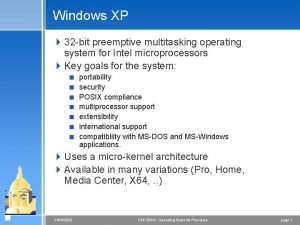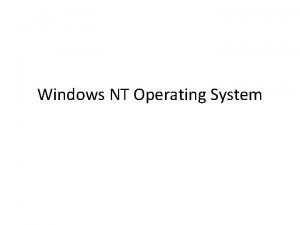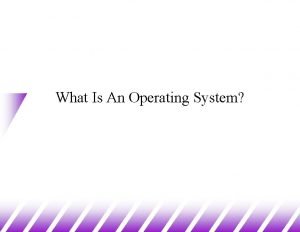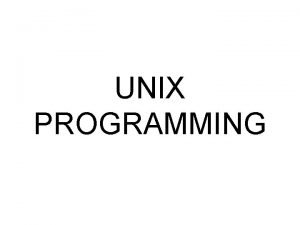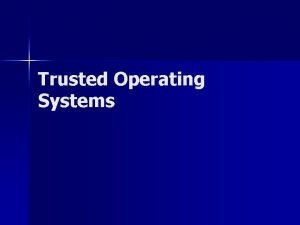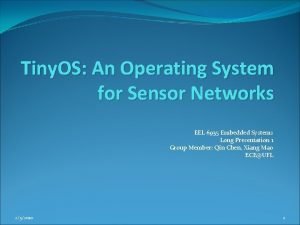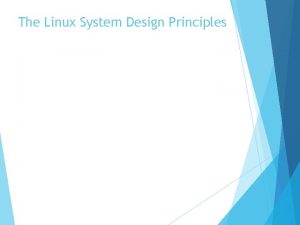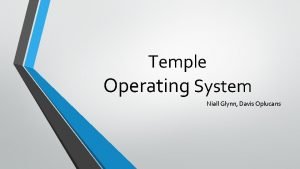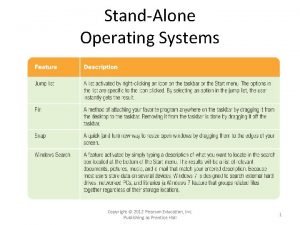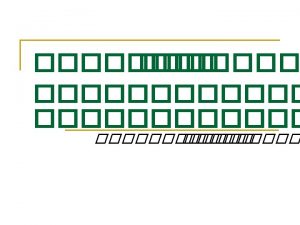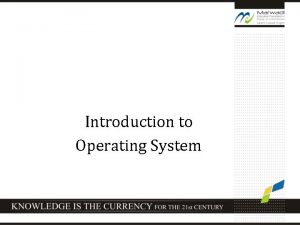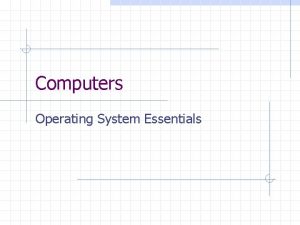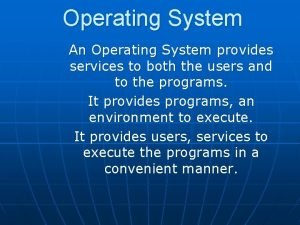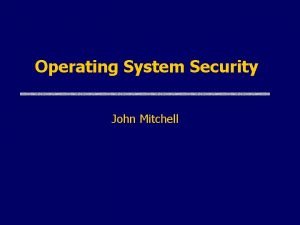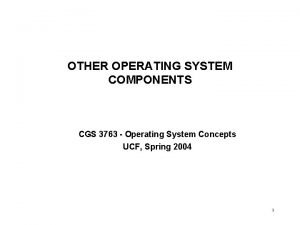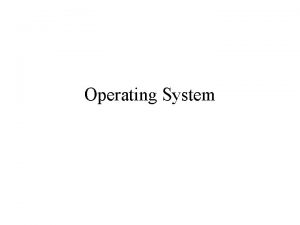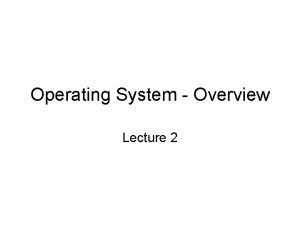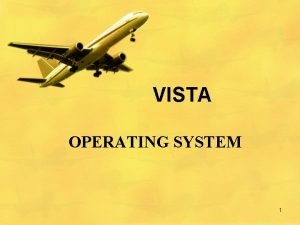What is an Operating System An operating system















- Slides: 15

What is an Operating System? An operating system is the software that makes everything in the computer work together smoothly and efficiently.

Functions of Operating Systems Operating systems have three basic jobs they must do: Control Hardware Run Applications Manage data and files

Functions of Operating Systems Control Hardware they control access to and allocation of resources. Imagine if your printer received print instructions from two different programs and began printing from both of them simultaneously.

Functions of Operating Systems l Run Applications The operating system determines which programs will have access to the CPU and under what conditions. Similarly, the operating system controls which program can write data to a disk, or draw something on the screen.

Functions of Operating Systems Manage Data and Files The third characteristic of operating systems is they create a user interface through which the user interacts with the computer. In the earliest computers, the interface consisted of things like punched cards and paper tape, created by specialized keyboard devices.

Types of Operating Systems Windows 95/98 - This is what you will find on most new PC's today. It is a very popular OS, and there are many applications that run on it. It has an easy-to-use Graphical User Interface (GUI).

Types of Operating Systems Windows NT - Windows NT is another Microsoft operating system that is beginning to really catch on because of it's networking capabilities. Microsoft is trying to slowly phase out Windows 95/98 and replace it with some form of NT.

Types of Operating Systems UNIX is a command prompt OS, much like the now defunct Microsoft DOS operating system. Unix is by far the oldest of the operating systems, having been in existence for a good 20 years.

MS-DOS Operating System is a command line user interface. MS-DOS 1. 0 was released in 1981 for IBM computers and the latest version of MS-DOS is MS-DOS 6. 22 released in 1994. While MS-DOS is not commonly used by itself today, it still can be accessed from Windows 95, Windows 98 or Windows ME.

Operating Systems-Classification Operating systems can be classified as follows: multi-user : Allows two or more users to run programs at the same time. Some operating systems permit hundreds or even thousands of concurrent users. multiprocessing : Supports running a program on more than one CPU. multitasking : Allows more than one program to run concurrently. multithreading : Allows different parts of a single program to run concurrently. real time: Responds to input instantly. General-purpose operating systems, such as DOS and UNIX, are not realtime.

Operating Systems-Classification Multi-user Refers to computer systems that support two or more simultaneous users. All mainframes and minicomputers are multiuser systems, but most personal computers and workstations are not. Another term for multi-user is time sharing.

Operating Systems-Classification Multiprocessing Refers to a computer system's ability to support more than one process (program) at the same time. Multiprocessing operating systems enable several programs to run concurrently. UNIX is one of the most widely used multiprocessing systems. Refers to the utilization of multiple CPUs in a single computer system. This is also called parallel processing.

Operating Systems-Classification Multitasking The ability to execute more than one task at the same time, a task being a program. The terms multitasking and multiprocessing are often used interchangeably, although multiprocessing sometimes implies that more than one CPU is involved. In multitasking, only one CPU is involved, but it switches from one program to another so quickly that it gives the appearance of executing all of the programs at the same time.

Operating Systems-Classification Multithreading The ability of an operating system to execute different parts of a program, called threads, simultaneously. The programmer must carefully design the program in such a way that all the threads can run at the same time without interfering with each other.

Operating Systems-Classification Real time They are used for such tasks as navigation, in which the computer must react to a steady flow of new information without interruption. Real time can also refer to events simulated by a computer at the same speed that they would occur in real life. In graphics animation, for example, a realtime program would display objects moving across the screen at the same speed that they would actually move.
 Buddy system example
Buddy system example File system in operating system
File system in operating system Ufs4.0
Ufs4.0 File system in operating system
File system in operating system Windows xp4
Windows xp4 Nt operating system
Nt operating system What is operating system examples
What is operating system examples Operating system manages
Operating system manages History of unix
History of unix Kernel block diagram
Kernel block diagram Trusted os
Trusted os Tinyos operating system
Tinyos operating system Explain in detail about linux system design principles.
Explain in detail about linux system design principles. Terrence andrew davis
Terrence andrew davis Stand alone operating system
Stand alone operating system Single user and multi user operating system
Single user and multi user operating system




